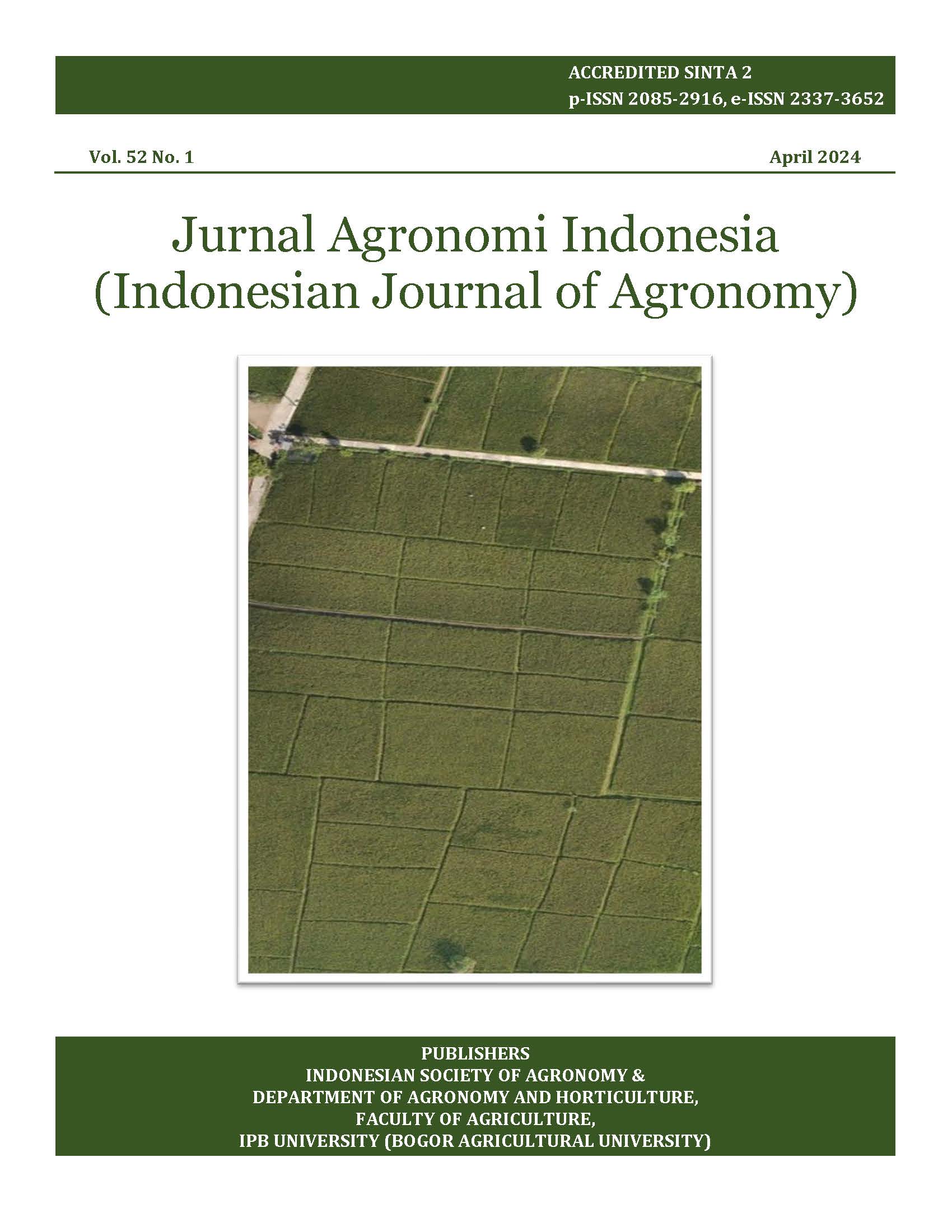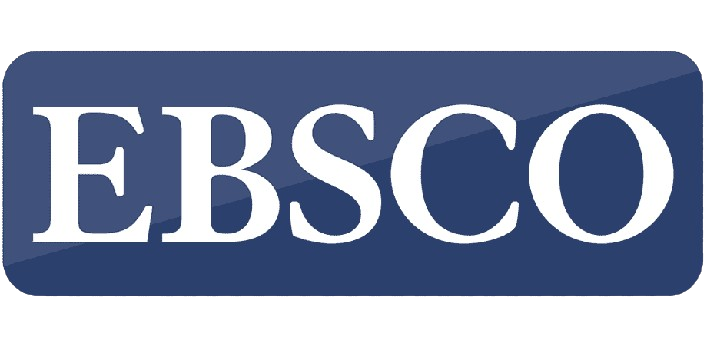Effect of CaCO3, humic acid, and arbuscular mycorrhizal applications on soybean growth in ultisol of Sijunjung, West Sumatra
DOI:
https://doi.org/10.24831/jai.v52i1.53751Abstract
Soybean is an important source of cheap protein. However, an adequate supply of soybeans is still challenging in Indonesia. This research aimed to evaluate the morphological, physiological, and yield responses of soybeans from the application of calcium carbonate (CaCO3), humic acid, and arbuscular mycorrhizal fungi (AMF). The research was conducted from December 2022 to April 2023 at the ultisol soil of Sijunjung Regency, West Sumatra. The experiment used a split-split-plot design with three replications. The first factor was AMF and without AMF application. The second factor was humic acid and without humic acid. The third factor was doses of CaCO3 application: 0, ¼, ½, ¾, and 1 time of exchangeable Al. The results showed that CaCO3 application significantly affected root length, shoot dry weight, N-tissue content, soil pH, and exchangeable Al. The application of AMF affected the percentage of AMF colonization. The yield components did not show any significant differences among treatments. However, the yield was 24.85% higher than that written in the official description. Therefore, the application of CaCO3 or humic acid or AMF could be a potential solution to increase soybean yields in ultisol. It needs further evaluation in the field to support future farming practices.
Keywords: Al-exch; calcium carbonate; N-tissue content; productivity; soil pH













